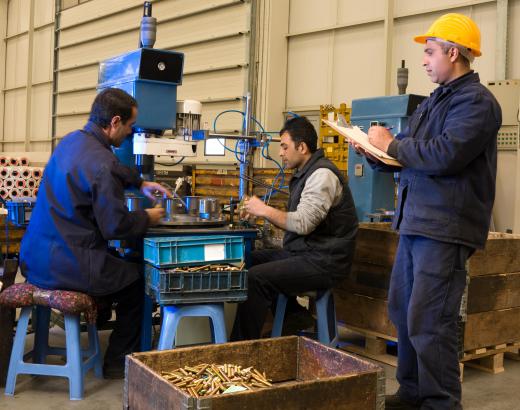Machine capability is determined by multiple capacity parameters for an individual piece of machinery. The amount of raw material that can be loaded into a machine defines one of the capabilities of a machine. Other capabilities include the maximum output, speed of production, and length of time between required servicing. Manufacturers are often interested in machine capability when setting up a multi-machine production process. Capability gaps between machines can cause lag time and loss in a production line.
Producers of large-scale manufacturing and printing machines typically list the machine capability description in their product guides. Larger and more expensive machines often have increased capabilities to meet more extreme production demands. Some capabilities can be enhanced with the addition of accessories or alternate parts. Capability must exceed the maximum anticipated workload to provide the necessary output. Many manufacturers purchase machines with capabilities that exceed their current demands so they are ready for future growth.

Load capacity is the size and amount of raw product the machine can hold. This capability is generally given in a range to represent the minimum and maximum load size the machine is capable of accepting. The size of the raw materials delivered by a company supplier usually guides the decision to buy a machine based on its load capabilities. Overloading the machine beyond recommended capacity typically causes damage. Insufficient workforce to keep a machine operating above minimum load capacity can also cause an expensive machine malfunction.

The production speed of a piece of machinery is broadly considered the most important machine capability. Production speed is the amount of finished product a machine is capable of making. A factory is only able to produce products for market as fast as the slowest machine on the floor. Low production speeds can produce long waits between the various manufacturing processes. Maximum output on a machine must meet daily demand to avoid falling behind on work orders.
Capability data from the company that made the machine may not give the full picture of its functionality. Private machine capability analysis provides insight into real-world machine operation. Capability figures supplied by the companies making the machines may represent data collected under optimal conditions. A machine capability study done by a third-party company typically offers the unbiased data of a real consumer's experience. Details about machine limitations and potential problems can sometimes be found in machine reviews.
